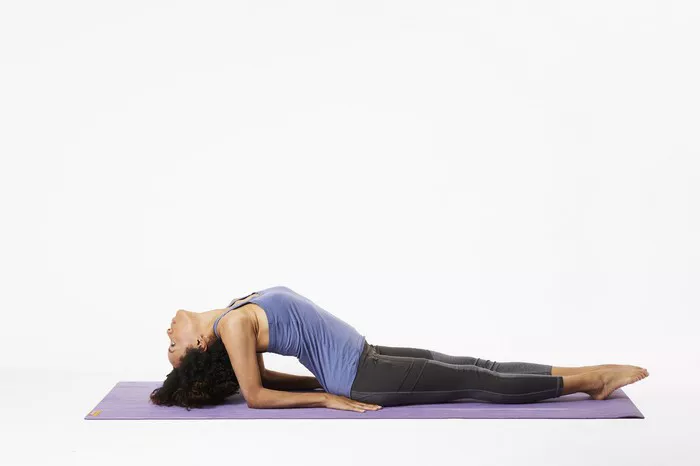The human body is a complex and intricate system where all organs and systems are interconnected. One of the most vital components of this system is the pancreas, an organ responsible for regulating blood sugar levels and aiding in digestion. The pancreas plays a significant role in the metabolic process and in maintaining overall health. Unfortunately, poor lifestyle choices, unhealthy diets, and high levels of stress can lead to an imbalance in the functioning of the pancreas, potentially contributing to conditions such as diabetes, pancreatic inflammation, and digestive problems.
In recent years, yoga has emerged as a powerful tool to address a variety of health concerns. Through asanas (postures), pranayama (breathing techniques), and meditation, yoga offers a holistic approach to healing and wellness. In particular, certain yoga practices are believed to help activate and support the proper functioning of the pancreas. In this article, we will explore how yoga can positively influence pancreatic health, the specific asanas and practices that target this vital organ, and the benefits of incorporating these techniques into your daily routine.
Understanding the Pancreas
Before delving into how yoga can activate the pancreas, it is important to understand the pancreas and its function in the body. The pancreas is a small, elongated organ located behind the stomach and near the duodenum (the first part of the small intestine). It performs two key functions:
Endocrine function: The pancreas secretes hormones such as insulin and glucagon. Insulin helps lower blood sugar levels, while glucagon helps raise blood sugar levels. This balance between insulin and glucagon is crucial for regulating blood sugar levels and preventing conditions like diabetes.
Exocrine function: The pancreas also produces digestive enzymes that help break down food in the small intestine, ensuring that nutrients are properly absorbed into the bloodstream.
Given the pancreas’ role in regulating blood sugar and aiding digestion, it is vital to maintain its health and functionality. When the pancreas is not functioning properly, it can lead to imbalances in blood sugar levels, digestive issues, and increased stress on the body.
Yoga’s Impact on Pancreatic Health
Yoga offers a multifaceted approach to health that combines physical movement, breath control, and mental relaxation. Each of these components can contribute to the activation and regulation of the pancreas in the following ways:
Stimulation of the digestive system: Many yoga postures help massage and stimulate the internal organs, including the pancreas, promoting better digestion and nutrient absorption. This improves overall metabolic function and ensures that the pancreas operates efficiently.
Stress reduction: Chronic stress is known to negatively affect blood sugar regulation and hormone balance, including the secretion of insulin. Yoga, particularly through meditation and breathwork, helps reduce stress levels, thereby preventing the detrimental effects of stress on the pancreas.
Improved blood circulation: Certain yoga poses can enhance blood flow to the pancreas, helping to oxygenate the tissues and support its overall function. Improved circulation ensures that nutrients and hormones are transported efficiently throughout the body.
Balancing the endocrine system: The practices of yoga are designed to harmonize the body’s systems, including the endocrine system. By improving overall hormonal balance, yoga helps regulate insulin production and maintain stable blood sugar levels.
With this in mind, let’s explore specific yoga techniques that can activate and support the pancreas.
Key Yoga Asanas for Pancreatic Activation
Several yoga poses are particularly effective in stimulating the pancreas and improving its function. These postures focus on opening the abdominal area, stimulating the digestive organs, and encouraging a sense of relaxation and balance.
1. Paschimottanasana (Seated Forward Bend)
Paschimottanasana is a forward bend that targets the abdominal region and stimulates the digestive organs, including the pancreas. This asana helps relieve stress, improve blood circulation, and enhance digestion.
How to perform Paschimottanasana:
- Sit with your legs extended straight in front of you and your feet flexed.
- Inhale and lengthen your spine, reaching the top of your head toward the ceiling.
- As you exhale, hinge forward from your hips, bringing your chest toward your thighs.
- Reach your hands toward your feet, trying to touch your toes or place your hands on your shins.
- Hold the position for 20-30 seconds, breathing deeply.
Benefits:
- Stretches the entire back and spine.
- Stimulates the pancreas, liver, and kidneys.
- Improves blood circulation to the abdominal organs.
2. Ardha Matsyendrasana (Half Lord of the Fishes Pose)
Ardha Matsyendrasana is a seated spinal twist that helps detoxify the body by stimulating the abdominal organs and improving circulation to the pancreas.
How to perform Ardha Matsyendrasana:
- Sit with your legs extended in front of you.
- Bend your right knee and place your right foot on the outside of your left thigh.
- Place your left elbow on the outside of your right knee, twisting your torso to the right.
- Look over your right shoulder and hold the position for 20-30 seconds, breathing deeply.
- Repeat on the other side.
Benefits:
- Massages and stimulates the pancreas and other abdominal organs.
- Enhances spinal flexibility and detoxification.
- Aids digestion and helps balance blood sugar levels.
3. Uttanasana (Standing Forward Bend)
Uttanasana is a standing forward bend that stretches the entire back and encourages circulation to the abdominal organs, including the pancreas.
How to perform Uttanasana:
- Stand with your feet hip-width apart and your arms at your sides.
- Inhale, lengthen your spine, and exhale as you fold forward from the hips.
- Bring your hands to the floor or hold your ankles or calves.
- Hold the position for 20-30 seconds, breathing deeply.
Benefits:
- Stretches the hamstrings and lower back.
- Improves blood flow to the pancreas.
- Calms the mind and relieves stress.
4. Setu Bandhasana (Bridge Pose)
Setu Bandhasana is a backbend that opens the chest and stimulates the abdominal organs, promoting better circulation to the pancreas.
How to perform Setu Bandhasana:
- Lie on your back with your knees bent and your feet flat on the floor.
- Place your arms by your sides with your palms facing down.
- Press your feet into the floor as you lift your hips toward the ceiling, creating a bridge shape with your body.
- Hold the position for 20-30 seconds, breathing deeply.
Benefits:
- Strengthens the lower back and glutes.
- Improves blood flow to the pancreas and other abdominal organs.
- Relieves stress and anxiety.
5. Bhujangasana (Cobra Pose)
Bhujangasana is a gentle backbend that opens the chest and stimulates the digestive organs, including the pancreas. This pose helps improve circulation and enhances energy flow through the body.
How to perform Bhujangasana:
- Lie face down with your hands placed under your shoulders and your elbows close to your body.
- Press your feet into the mat and gently lift your chest off the floor, extending your spine.
- Keep your elbows slightly bent and avoid collapsing your lower back.
- Hold for 15-30 seconds, breathing deeply.
Benefits:
- Strengthens the spine and opens the chest.
- Stimulates the pancreas and liver.
- Improves digestion and promotes energy flow.
Pranayama and Breathwork for Pancreatic Health
In addition to asanas, pranayama (breathing exercises) play a crucial role in promoting health and activating the pancreas. Deep breathing techniques help calm the nervous system, reduce stress, and improve circulation, all of which are essential for optimal pancreatic function.
1. Anulom Vilom (Nadi Shodhana or Alternate Nostril Breathing)
Anulom Vilom is a breathing technique that balances the flow of energy in the body, reduces stress, and promotes mental clarity. This practice is especially beneficial for regulating blood sugar levels and enhancing the function of the pancreas.
How to perform Anulom Vilom:
- Sit in a comfortable seated position with your spine straight.
- Close your right nostril with your right thumb and inhale deeply through the left nostril.
- Close the left nostril with your right ring finger and exhale through the right nostril.
- Inhale through the right nostril, then close it and exhale through the left nostril.
- Continue this alternating pattern for 5-10 minutes.
Benefits:
- Reduces stress and anxiety.
- Balances the nervous system and regulates the endocrine system.
- Improves blood circulation to the pancreas and other organs.
2. Bhastrika (Bellows Breath)
Bhastrika is an energizing breathing technique that increases oxygen flow to the body and stimulates the digestive system, including the pancreas.
How to perform Bhastrika:
- Sit in a comfortable seated position with your spine straight.
- Inhale deeply through both nostrils, expanding your diaphragm.
- Exhale forcefully through both nostrils, contracting your abdominal muscles.
- Continue this rapid breathing pattern for 30-60 seconds, then relax.
Benefits:
- Stimulates the pancreas and digestive organs.
- Increases energy and alertness.
- Balances the endocrine system and supports detoxification.
Meditation and Relaxation for Pancreatic Health
Yoga is not just about physical postures but also about cultivating mindfulness and mental relaxation. Meditation practices can be incredibly effective for reducing stress and improving the overall functioning of the pancreas. By incorporating mindfulness and meditation into your yoga routine, you can help restore balance to the body and mind.
1. Mindful Breathing Meditation
Mindful breathing is a simple yet powerful meditation technique that can calm the mind, reduce stress, and activate the parasympathetic nervous system, which helps regulate digestion and metabolism.
How to practice mindful breathing:
- Find a quiet and comfortable space to sit or lie down.
- Close your eyes and focus your attention on your breath.
- Inhale deeply through your nose, counting to four, and exhale slowly through your mouth, counting to four.
- Continue breathing slowly and mindfully for 10-15 minutes.
Benefits:
- Reduces stress and anxiety.
- Promotes relaxation and supports healthy digestion.
- Balances blood sugar levels and supports the function of the pancreas.
Conclusion
Yoga offers a comprehensive approach to maintaining the health and function of the pancreas. Through targeted asanas, pranayama, and meditation, yoga stimulates the pancreas, promotes better digestion, reduces stress, and enhances overall metabolic balance. By incorporating these practices into your daily routine, you can activate and support the health of your pancreas, contributing to better overall health and well-being.
Remember, consistency is key in yoga practice. Start slowly and gradually incorporate these practices into your lifestyle. Over time, you will experience the benefits of enhanced pancreatic health and improved overall vitality. As always, consult with a healthcare professional if you have specific health concerns or conditions related to the pancreas before beginning any new exercise or wellness routine.
Related Topics





















